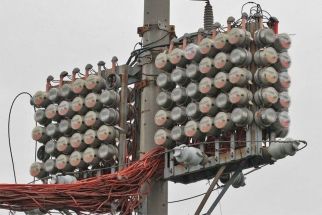Against great odds, Abu Sayyaf survives
MANILA, Philippines – US spy planes monitor their jungle strongholds and Filipino assault troops keep them on the run. Combat casualties and arrests have eroded their numbers.
But Abu Sayyaf militants have survived years-long American-backed military assaults and remain a threat, reflecting the dilemma of defeating terrorism.
Suspicions quickly fell on the al-Qaeda-linked militants for the June 8 kidnapping of popular ABS-CBN TV news anchor Ces Drilon and her two-man crew on violent southern Sulu Island – the latest reminder of their unsettling tenacity and the danger they still pose.
The abductions stunned a nation accustomed to Drilon’s face, and there were hopes she might be freed after one of her cameramen was released Thursday despite ransom demands.
The young Abu Sayyaf militants being linked by police to kidnappings are relative unknowns eager to replace commanders who have been killed, captured or hampered by age.
Government security officials believe the group continues to recruit members despite sustained military operations in the south.
Authorities discovered that most of those guarding the ABS-CBN hostages and their guide appeared young, according to Chief Superintendent Joel Goltiao, police director for the Autonomous Region in Muslim Mindanao.
Young militants
Reports from the local official source also corroborated police information that about 20 of those Abu Sayyaf men guarding Drilon, her cameraman Jimmy Encarnacion and Mindanao State University professor Octavio Dinampo were young militants.
Based on intelligence reports, they belong to the group of Albader Parad and Gapur Jumdail, younger brother of Umbra Jumdail alias Dr. Abu Pula.
“I would say probably marami pa rin ang nag-join sa kanila (many have still joined them),” Goltiao said, but adding he believes they were lured with money to join.
A few Islamic hardliners and religious leaders organized the Abu Sayyaf with just one 30-caliber machine gun and four assault rifles in Basilan in 1992. At its peak in 2000, the group had amassed about 3,000 members, including about 500 armed fighters, who were mostly jobless peasants with little combat training, according to a captured pioneer rebel commander, Abu Hamdie.
The Abu Sayyaf – or Bearer of the Sword – wrote its early history in blood, staging kidnappings, bombings and beheadings to draw attention, recruits and funds from al-Qaeda.
American troops were dispatched to the troubled south in 2002 after Abu Sayyaf gunmen kidnapped nearly two dozen people from a resort, including three Americans, turning the region into a key theater in Washington’s global war on terror.
Rare photos of the militants, a report on the interrogation of a recently captured Indonesian rebel ally and a confidential Philippine National Police terrorism report seen by The Associated Press depict a group struggling to cope with the loss of many of its leaders, funding and logistical shortages and battle setbacks.
But they also tell a disconcerting fact: Hundreds of militants have survived and are continuing to plot attacks.
More than 380 Abu Sayyaf fighters, with 298 firearms, are hiding mainly in the hinterlands of predominantly Muslim Sulu and nearby Basilan Island, according to a police terror threat assessment.
Following the killing, in Sulu clashes, of Abu Sayyaf chieftain Khaddafy Janjalani and his presumed successor Abu Sulaiman in 2006 and 2007, respectively, the loose alliance of about six rebel factions has had no central leader, the police report said.
A foreign-trained commander, Yassir Igasan – valued for his crucial connections with Middle Eastern financiers – has declined to lead the group for unspecified reasons, the report said.
Mohamad Baehaqi, an Indonesian ally of the Abu Sayyaf who was captured in southern Davao Oriental province in February, told interrogators of planning bombings and kidnappings in March 2007 with two local militants, but couldn’t follow through “because of financial and manpower considerations,” a Philippine government interrogation report quoted him as saying.
Later, Baehaqi claimed to have been ordered by another Indonesian militant, Umar Patek, to bomb Roman Catholic cathedrals in Davao City and Sulu, with the explosives to be delivered by Patek’s wife. Those attacks fell through because of funding problems and tight security in the targeted areas, he said. – AP, Roel Pareño
- Latest
- Trending


























